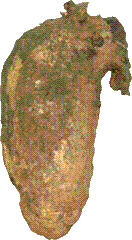
WOODPECKERS
birdfotos.com

LIFE STARTS
IN A BOOT
FOR SOME ARIZONA WOODPECKERS
One of the most common Woodpecker in Arizona is the Gila Woodpecker.
For those of you who are not familiar with the word Gila, it is pronounced (Heelaa)
Woodpeckers staring in this show are:
Ladder-backed
Acorn
Gila
Strickland's
Northern Flicker
Red-headed
Most of the images can be enlarged by clicking on them.
**********************************************************
Well, I can already here the many questions being raised.
We'll start with number 1. What's a Gila Woodpecker?
This is the easiest one to answer.
See photo below.
|
Male Gila Woodpecker |
Female Gila Woodpecker |
IF THESE IMAGES ARE TO SMALL FOR YOUR VIEWING,
JUST CLICK ON THEM FOR A LARGER IMAGE.
Remember now, it's not Gila, it's Heelaa, got it?
Have you noticed how the Woodpeckers are supporting them
selves by using their tail (quills) feathers?
Let's take a closer look at this.
****************************************
Since I have only talked about two things so far, the second question more than likely is;
What's a BOOT, and what does it have to do with Woodpeckers?
Maybe we should call it a cactus boot, or a nesting cavity.
However, I like the word boot the best. I suppose now you would like to see a photograph of one?
***************************************
The BOOT!

Well, this certainly doesn't look like much out side of its host.
Perhaps we can make it spin around so that we can see all 4 sides, or views of it.
Click on it to enlarge, but it won't be spinning in this view.
************************
Spinning view of the boot.
BOOT spinning 360 degrees, a quick load time. 11.9 KB image GIF
Click here to view it. (spin 1)
Next is an image of the BOOT spinning and separating to show a cut-a-way side view. It's a longer load time approximately 175 KB.
Click here to view it. (spin 3)
last is an image with a longer view time of the cut-a-way view, approximately 475 KB.
Click here to view it. (spin 4)
***************************************
Animation by my son Stanley Robinson
Squaw Creek Farm
http://members.tripod.com/~StanRitaR/index.html
E-mail stanleyf@pionet.net
*****************************************************
So far we haven't really found out to much about "Life in a Boot". So, let's get on with the show, (story).
You, in your life time, may never have the opportunity to see a cactus boot, and that is the main reason
I have decided to do this photographic report on it.
**************************
I have been told by reliable sources that it is not illegal to pick up a cactus boot,
as long as it is separated from its dead and decayed host, because it is not
considered a reusable nest. It is illegal however to remove any other type of a
bird nest from its affixed location. You won't see the boot as displayed
here when out birding. You will only see the entrance hole to it. See photo below.
Click on cactus to enlarge.
**********************************************************
Now in your mind's eye, picture this inside the cactus.
Click on it to enlarge.
*****************************
If you walk enough miles, in/through enough deserts,
enough years, you just might be lucky enough to see a sight like this.
See below photo.
The red arrow is pointing to a cactus boot or nest cavity.
Do to the impassable terrain I could not get closer to the cactus.
Click on image for a closer look.
On to the next page.
To the links page.
You may contact me at birdfotos@aol.com